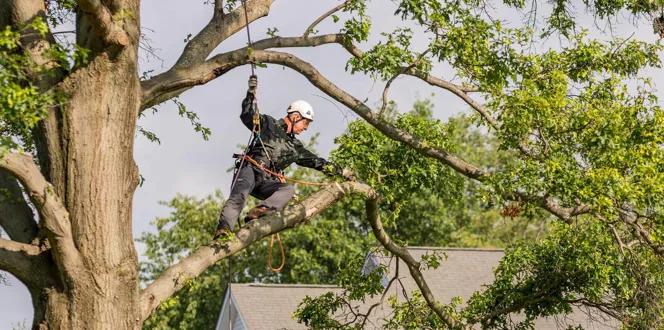As the summer temperatures drop and the leaves begin to change color, most homeowners are starting to get ready for the approaching winter and its elements. This can include taking warmer clothes out of storage, preparing the home to insulate heat, and even being proactive about your garden. What you may not know is that your trees are also undergoing their own winterization process.
Tree dormancy is a phrase often used while discussing landscaping, but what exactly does it mean?
Does the phrase “dormant season for trees” or “tree dormancy” sound familiar to you?
You may have heard these words recently, perhaps during an explanation of dormant pruning services. Because the dormant season usually arrives in your region within the early winter weeks, understanding its effects on your trees may help you better monitor their health before spring.
Why do trees go dormant and how do trees prepare for the dormant season?
Leaves are a tree’s solar panels, designed to capture the sun’s energy and pull water up from the roots to create sugars through photosynthesis. With shorter days, colder temperatures, and less sunlight around the corner, deciduous trees drop their leaves in autumn to reduce water loss during winter. Before they let them fall to the ground, however, trees re-absorb resources from their leaves, which they then remobilize in the spring for a flush of growth.
There are measures you can take to help the trees in your yard transition into the dormant season. Proper mulching at the base of trees before temperatures begin decreasing in fall helps insulate the soil and provides a better environment for roots. Rather than bagging fall foliage, you can mix them with your mulch or layer them around the base of each tree to retain nutrients. Note: always maintain a small buffer between the mulch/leaves and the trunk to avoid rot.
Giving trees adequate water in preparation for the dormant season is important, but the amount will depend on the tree species, its age, and your geography. In general, we recommend watering the area just outside the trunk to the extent of the longest branches with a soaker hose. Watering deeply and infrequently is best. Younger, less established trees need the most care before the dormant season so that their root system can fully develop.
Just how inactive is a tree during the dormant season?
Dormant trees may appear to be completely inactive above ground, but many use their energy reserves to further develop their root system during this time.
Why is the dormant season a good time to perform tree maintenance?
Fall and winter are great times to perform tree maintenance. Drier ground and bare branches allow arborists to access and inspect your trees with ease, and dormant tree pruning decreases the likelihood of attack from insect pests and pathogens.
Overall, dormant tree maintenance avoids disrupting your tree’s growth and puts them in a position to flourish when the ground thaws and the sun shines again.





